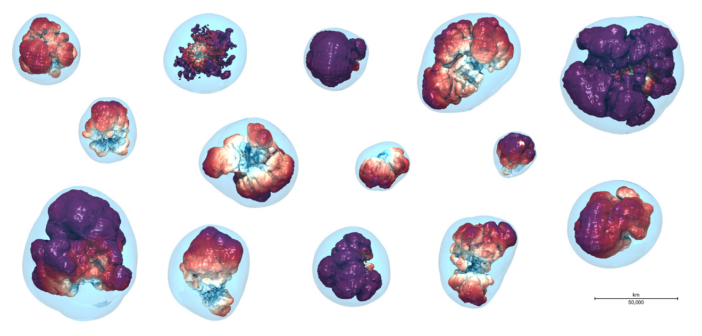A research team led by Adam Burrows (Princeton University and the Institute for Advanced Study) has created the largest collection yet of state-of-the-art, three-dimensional core-collapse supernova simulations. The image above shows the results of several of the team’s simulations, showcasing the wide variety of structures and sizes attained by exploding stars just a few seconds after the stars’ outer layers rebounded off their collapsed cores. The smooth outer blue bubble shows the location of the expanding shock, while the more complex inner bubbles show the location of the ejected material. Red material is moving outward and blue material is moving inward. These simulations, which follow the collapse of stars with masses between 9 and 60 solar masses, allowed the team to find correlations between the properties of the explosions and the properties of the stars they came from. For example, the mass of the resulting neutron star is correlated with the compactness of the star. The simulations also predicted a correlation between the energy of the explosion and how asymmetrical it is, which can be tested in future studies. To learn more about the results of this study, be sure to check out the full research article linked below.
Citation
“Physical Correlations and Predictions Emerging from Modern Core-Collapse Supernova Theory,” Adam Burrows et al 2024 ApJL 964 L16. doi:10.3847/2041-8213/ad319e

